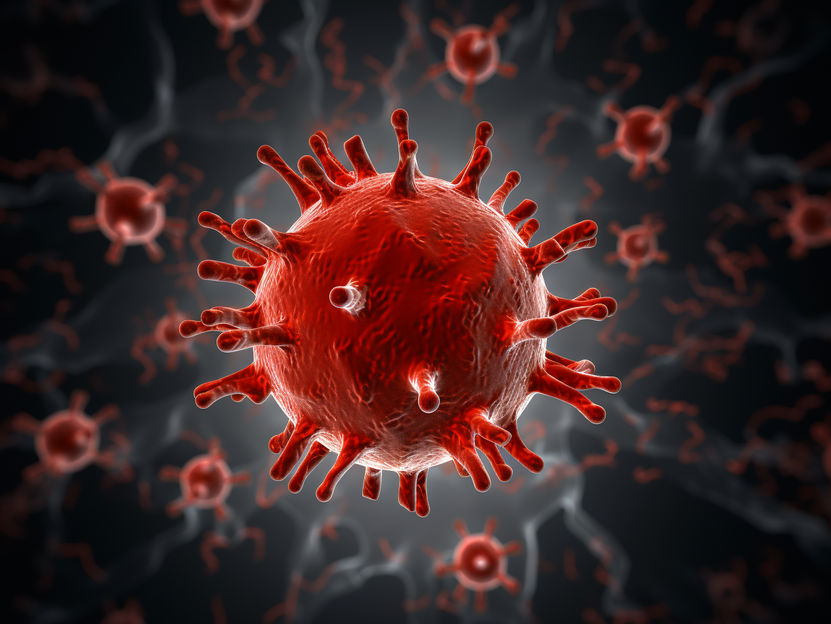Where the HI-Virus sleeps in the brain
The human immunodeficiency virus HIV-1 is able to infect various tissues in humans. Once inside the cells, the virus integrates its genome into the cellular genome and establishes persistent infections. The role of the structure and organisation of the host genome in HIV-1 infection is not well understood. Using a cell culture model based on brain immune microglia cells, an international research team led by scientists from Heidelberg University Hospital and the German Center for Infection Research (DZIF) now defined the insertion patterns of HIV-1 in the genome of microglia cells.

Symbolic image
Computer-generated image
An infection with the human immunodeficiency virus (HIV) is in 99,9% of cases still an incurable disease. This is because the virus "sleeps" for a long time in the genome of infected cells, making it invisible and inaccessible to the immune system and antiviral drugs. The pathways that HIV-1 takes to remain hidden in the host cell genome have been studied primarily in blood CD4+ T cells—the main target cells of the virus. However, HIV-1 is capable of infecting other immune cells in different organs, where it establishes stable reservoirs. One such viral sanctuary is the brain, where the virus infects mostly microglia immune cells, often causing neuroinflammation and symptoms of HIV-1 associated neurocognitive disorder (HAND).
Questions related to HIV-1 infection and replication in the brain have been very difficult to resolve because studies in patients are limited in their ability to monitor the virus in the brain. An international team led by Dr Marina Lusic from Heidelberg University Hospital and the DZIF now succeeded in developing HIV-1-infection models in human microglia cell cultures. Establishment of the models allowed for the first time to investigate the insertion of the HIV-1 genome in that of microglia cells. Genomic insertion results in the silencing of the viral genome, leading to the so-called “sleeping virus” phenotype.
The researchers, who recently published their findings in the renowned scientific journal Cell Reports, used the microglia cell models to determine HIV-1 integration sites and associate them with structural and regulatory elements of the chromatin.
“Modelling HIV-1-infections of the brain immune cells using the microglia cell cultures, we discovered a stronger correlation between a cellular chromatin factor and the sleeping virus phenotype,” says the paper’s first author Mona Rheinberger. “This protein, called CTCF, is one of the most important architectural proteins of the cellular genome, involved in chromatin folding and packaging inside the cells. Our findings indicate that CTCF is shaping the HIV-1 genomic insertion profiles in microglia, thus contributing to the latent infection state.”
“These studies in cell culture models are extremely important to understand how the virus can be targeted in different parts of the body, where it can remain hidden or cause neurological disorders even under current therapeutic regimens,” Dr Lusic concludes.
Original publication
Other news from the department science

Get the life science industry in your inbox
By submitting this form you agree that LUMITOS AG will send you the newsletter(s) selected above by email. Your data will not be passed on to third parties. Your data will be stored and processed in accordance with our data protection regulations. LUMITOS may contact you by email for the purpose of advertising or market and opinion surveys. You can revoke your consent at any time without giving reasons to LUMITOS AG, Ernst-Augustin-Str. 2, 12489 Berlin, Germany or by e-mail at revoke@lumitos.com with effect for the future. In addition, each email contains a link to unsubscribe from the corresponding newsletter.





















































